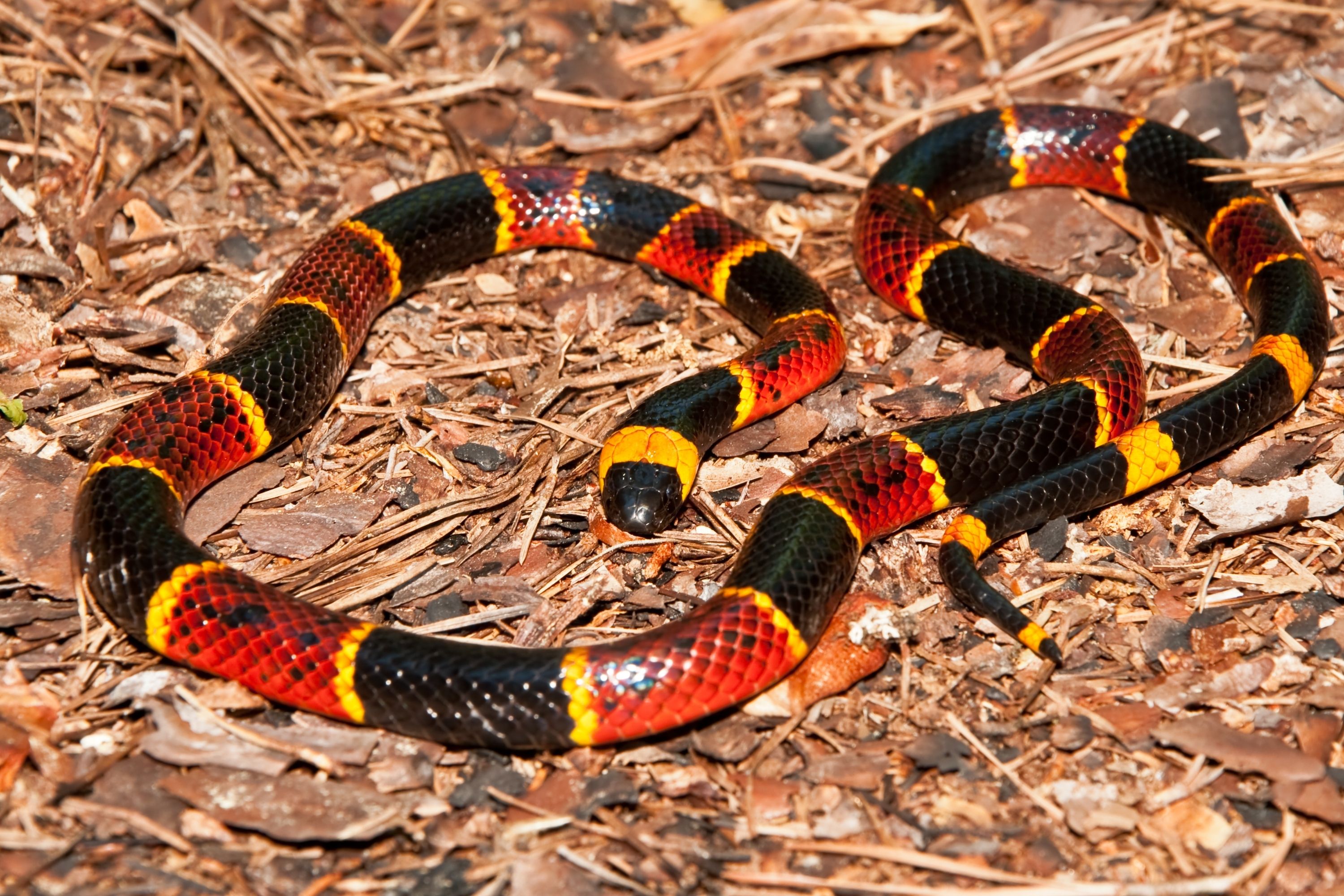Arizona coral snake
(Micruroides euryxanthus)

Description
Micruroides is a genus of venomous coral snake in the family Elapidae. The genus is monotypic, containing only the species Micruroides euryxanthus. Micruroides euryxanthus, commonly known as the Sonoran coral snake or the Arizona coral snake, is endemic to northwestern Mexico and the southwestern United States. Adults of M. euryxanthus are 11–24 inches (28–61 centimetres) long. The color pattern consists of broad, alternating rings of red and black, separated by narrower rings of white or yellow. Markings become paler as they reach the belly. The head is black, the black extending to the posterior border of the parietals. The smooth dorsal scales are arranged in 15 rows at midbody. The ventrals number 214–241. The anal plate is divided. The subcaudals number 21–34, and are divided (paired). Micruroides euryxanthus resembles Micrurus fulvius. However, the white or yellow rings are broader than in M. fulvius, and there are fewer black rings on the tail, usually only 2. Also, the first ring on the body (the first ring behind the white or yellow ring on the back of the head) is red, whereas in Micrurus fulvius it is black. The venom of M. euryxanthus is neurotoxic and extremely potent, but no fatalities have been reported. M. euryxanthus is found in arid and semiarid regions in numerous habitats, both on plains and on lower mountain slopes, from sea level to 5,800 ft (1,800 m). In Arizona it is abundant in rocky upland desert. The Sonoran coral snake usually stays underground and comes out at night, but can also appear during and after rains. When startled, frightened, or threatened, M. euryxanthus will hide its head under its body and raise and tightly curl its tail. While in this posture, it will "fart": snakes do not have an anal cavity in the sense that humans and most mammals do, but rather a tract that allows for both disposal of waste and for laying of eggs in females. Instead, it will forcibly and noisily emit gas from its cloaca, a behavior known as "cloacal popping", and predictably this phenomenon has a very unpleasant smell. The Arizona coral snake preys upon small snakes, predominantly Rena (snake), but also Sonora, and Tantilla. It will also eat small lizards such as skinks.
Taxonomic tree:







